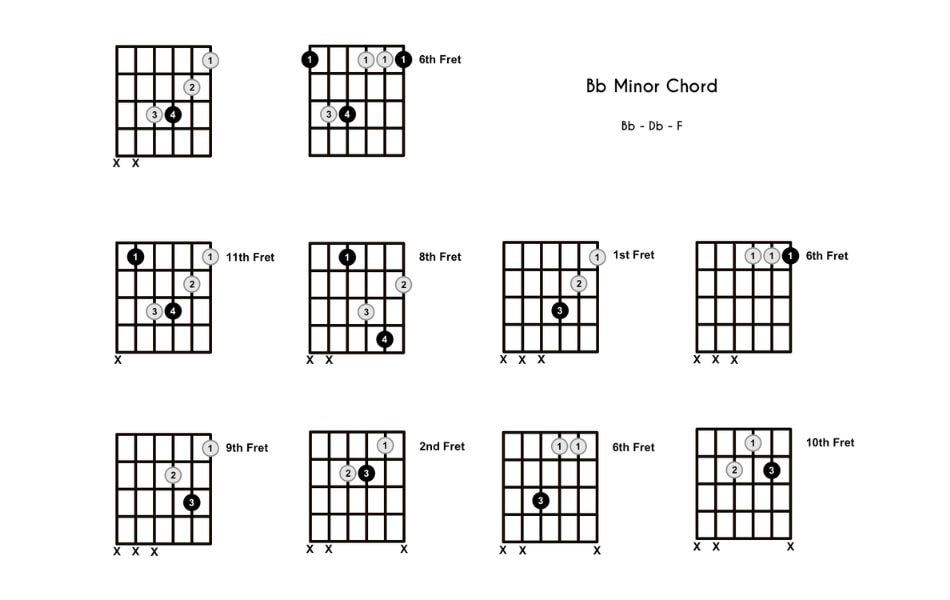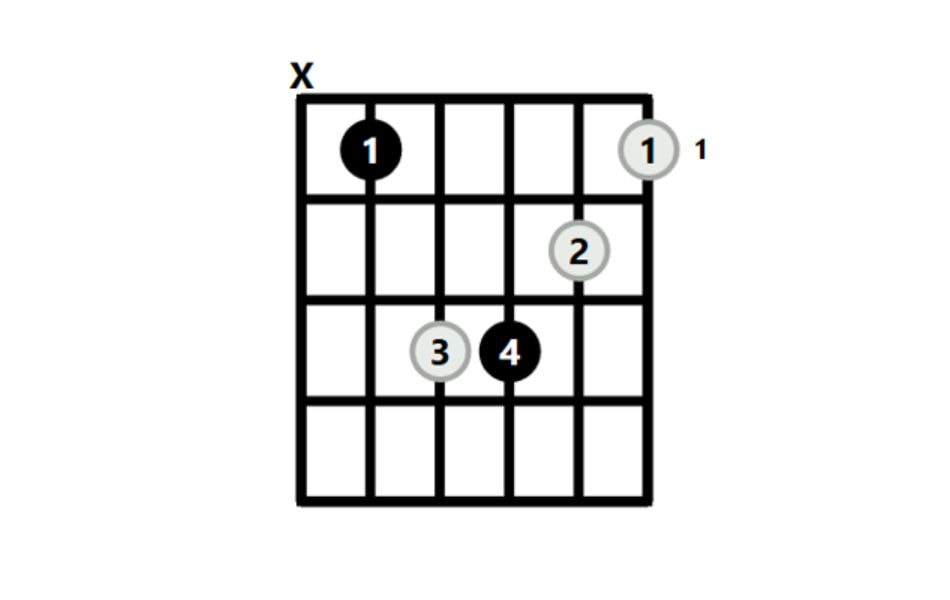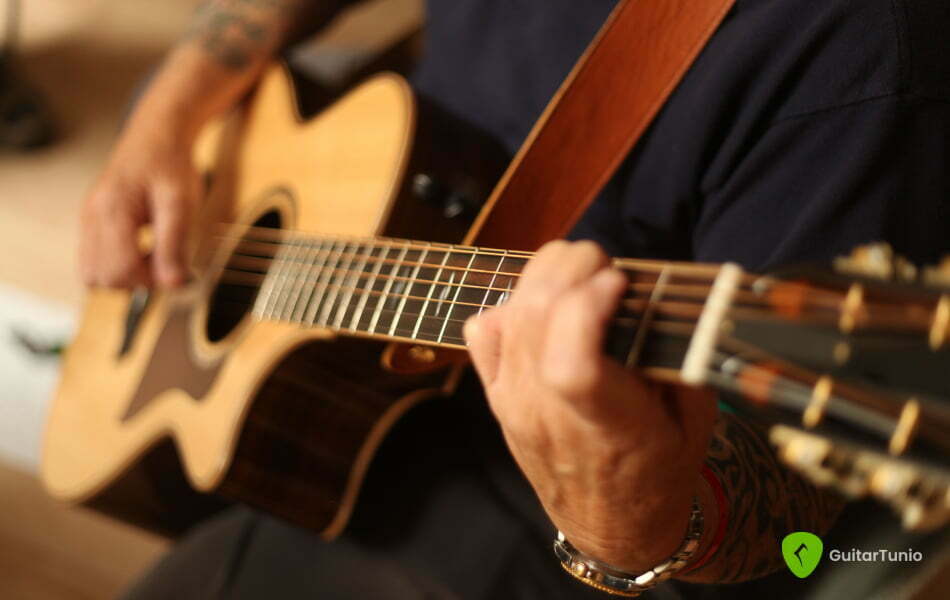How To Play B Flat Minor Guitar Chord
Learning how to play the B flat minor guitar chord is not only about mastering a specific fretboard position but also about delving into the intricate art of creating emotive sounds on the guitar. Whether you're a beginner embarking on your musical journey or an intermediate player seeking to enhance your chord repertoire, understanding and effectively playing the B flat minor chord is a fundamental step.
Overview of B flat minor guitar chord
BBM typically stands for B flat minor guitar chord notation. In music theory, a chord is a combination of three or more musical notes played simultaneously, creating a rich and harmonious sound. Let's delve into some quick theory regarding the B flat minor (BBM) chord:
- The B flat minor chord is made up of Bb, Db, and F notes.
- Forming the Bbm chord involves playing the root (1st), flattened third, and fifth notes from the Bb minor scale.
- Similar to all minor chords, the B flat minor chord, when measured from the root note, comprises a minor 3rd, major 3rd, and perfect 4th interval (leading back to the root note).
- B flat minor is the relative minor of D flat Major.
- Within the key of B flat minor, Bbm serves as the first chord, and there are a total of seven chords: Bbm, C diminished, Db+, Ebm, F, Gb, and A diminished.

Some B flat minor guitar chord
Standard B flat minor chord
The widely used method to play the B flat minor (Bbm) chord involves employing the root-5 minor chord shape, commencing from the first fret. Many guitarists are acquainted with the B minor (Bm) chord, which begins at the second fret—often one of the initial barre chords learners encounter. Interestingly, the Bbm chord adopts the identical structure as the Bm barre chord (root-5), only shifted down by a single fret.

Easy Bbm chord
To play an easy or simplified version of the B flat minor (Bbm) chord, follow these steps:
- Place your index finger on the first fret of the high E string (first string).
- Put your middle finger on the second fret of the B string (second string).
- Position your ring finger on the third fret of the G string (third string).
By following these steps, you're essentially playing the first three strings of the standard B flat minor barre chord. This simplified version is a great starting point for those who find the full barre chord challenging. It allows you to get familiar with the Bbm sound and gradually progress to the full barre chord as you become more comfortable with the finger positions and transitions.
Bmm barre chord shapes
B flat Minor Barre Chord (A Shape)
- Place your index finger across all the strings at the 1st fret to create a barre.
- Put your middle finger on the 3rd fret of the A string.
- Place your ring finger on the 3rd fret of the D string.
- Place your pinky finger on the 3rd fret of the G string.
Barre Chord (E Shape):
- Barre your index finger across all the strings at the 6th fret.
- Place your ring finger on the 8th fret of the A string.
- Place your pinky finger on the 8th fret of the D string.
- Place your middle finger on the 7th fret of the G string.

These barre chord shapes for B flat minor guitar chord allow you to play the chord up and down the neck, giving you flexibility in where you play the chord on the guitar. Choose the shape that fits your playing style and the context of the song you're playing.
Scales can be played over Bmm
The primary and highly effective scales for soloing or improvising over the B flat minor chord or crafting melodies for songwriting purposes include:
- Bb Natural Minor Scale – Also known as Bb Aeolian, this scale is extensively utilized with the Bb minor chord and is considered the standard choice.
- Bb Minor Pentatonic Scale – Among the simplest scales to begin with when improvising over the Bb minor chord, making it accessible and easy to learn.
- Bb Minor Blues Scale – Adding a Blues flavor to the Bbm chord, this scale is fitting for those seeking to infuse a Bluesy essence into their solo or improvisation.
- Bb Dorian Mode – Incorporating this scale can lend a slightly brighter and more uplifting sound to the Bb minor chord, enhancing the musical expression.
- Bb Phrygian Mode – By using this scale, a darker tonal quality can be introduced to complement the B flat minor chord, providing a contrasting and evocative sound.
In conclusion, mastering the B flat minor guitar chord is a rewarding endeavor for any guitarist. This small configuration of finger placements on the fretboard holds the key to evoking emotions and creating musical atmospheres that resonate deeply.






